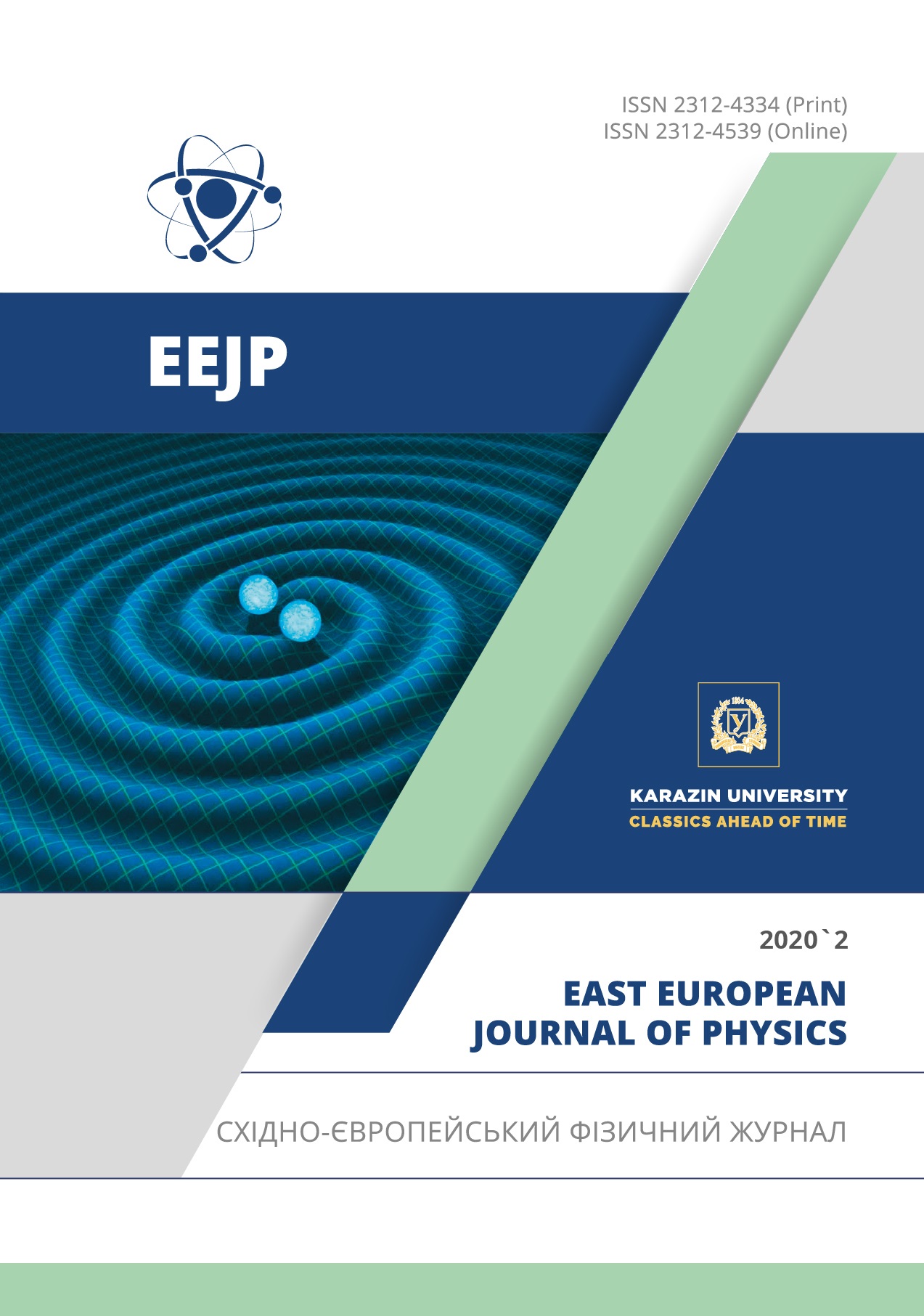Computer Simulation of the Angular Distribution of Electrons and Bremsstrahlung Photons in Tantalum Converter
Abstract
The present work is dedicated to study of the possibilities of improving the production method of 11C and 18F medical isotopes using a linear electron accelerator. Experimental studies of 11C and 18F isotopes production by the photonuclear technique were carried out in [1]. Various targets were irradiated by bremsstrahlung photons following by measurements targets’ activities. This experimental research has been carried out in the energy range from 10 to 40 MeV. The current work studies an angular distribution of bremsstrahlung photons in order to estimate the possibilities of producing maximum achievable levels of medical isotopes 18F and 11С activities. The angular distribution of bremsstrahlung photons is an important property of the irradiation stand which contains an assembly of targets. This important property allows designing necessary changes in the target assembly setup used to produce medical isotopes. The research presented in the current work was done as a computer simulation. The computer software package ‘KIPT’ was developed in С++ programming language, using the Geant4 toolkit in order to obtain the angular distribution of bremsstrahlung photons. Experimental setup materials as well as structural elements positions were defined in the DetectorConstruction class of our program. The parameters of an electron beam were defined in the PrimaryGeneratorAction class. The electron beam diameter was defined as 8 mm, energy Ее=36.7 MeV, corresponding to the real experiment carried out at the “Accelerator” Science and Research Establishment of Kharkiv Institute of Physics and Technology [1]. Models of physical processes occurring while the electron beam crosses the target assembly were defined in the PhysicsList class. All classes and modules necessary for the analysis of simulation results were included to our program together with visualization modules. Visualization modules use the OpenGL graphics library and the Qt5 software to represent the relative position of experimental setup parts and to visualize particle trajectories. As a result of this work, the angular distributions were obtained for the beam of electrons and bremsstrahlung photons directly before the target. This result will allow target assembly parameter optimization for optimal production of medical isotopes by the photonuclear technique.
Downloads
References
А.N. Dovbnya, R.N. Dronov, V.A. Kushnir, V.V. Mitrochenko, S.A. Perezhogin, L.I. Selivanov, V.A. Shevchenko, and B.I. Shramenko, East Eur. J. Phys. 4, 77-86 (2018), https://doi.org/10.26565/2312-4334-2018-4-09.
M. Fujiwara, K. Nakai, N. Takahashi, T. Hayakawa, T. Shizuma, S. Miyamoto, G.T. Fan, A. Takemoto, M. Yamaguchi, and M. Nishimura, Physics of Particles and Nuclei, 48(1), 124-133 (2017), https://doi.org/10.1134/S1063779617010075.
D. Nabs, and U. Köster, Applied Physics B, 103(2), 501-519 (2011), https://doi.org/10.1007/s00340-010-4278-1.
Geant4 Collaboration, Book For Application Developers Release 10.5, https://geant4-userdoc.web.cern.ch/geant4-userdoc/UsersGuides/ForApplicationDeveloper/BackupVersions/V10.5-2.0/fo/BookForApplicationDevelopers.pdf.
Geant4 Collaboration, Physics Reference Manual, https://geant4-userdoc.web.cern.ch/geant4-userdoc/UsersGuides/PhysicsReferenceManual/BackupVersions/V10.5-2.0/fo/PhysicsReferenceManual.pdf
NEA: Electron photon interaction cross section library. https://www.oecd-nea.org/tools/abstract/detail/iaea1435/
V.M. Kalinin, S.R. Tikhomirov, Lectures on Theory of Probability and Mathematical Statistics, (Saint-Petersburg State Institute of Technology, 2002), pp. 90. (in Russian)
Copyright (c) 2020 Viktoriia V. Lisovska, Tetiana V. Malykhina

This work is licensed under a Creative Commons Attribution 4.0 International License.
Authors who publish with this journal agree to the following terms:
- Authors retain copyright and grant the journal right of first publication with the work simultaneously licensed under a Creative Commons Attribution License that allows others to share the work with an acknowledgment of the work's authorship and initial publication in this journal.
- Authors are able to enter into separate, additional contractual arrangements for the non-exclusive distribution of the journal's published version of the work (e.g., post it to an institutional repository or publish it in a book), with an acknowledgment of its initial publication in this journal.
- Authors are permitted and encouraged to post their work online (e.g., in institutional repositories or on their website) prior to and during the submission process, as it can lead to productive exchanges, as well as earlier and greater citation of published work (See The Effect of Open Access).








